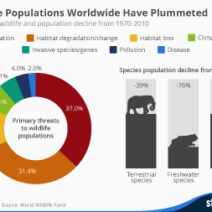To grasp the climate experienced by early settlers in New England, one must delve into a tapestry woven from meteorological patterns, geographical nuances, and seasonal variations. What might the settlers have thought upon their arrival? Did they anticipate the challenges posed by a climate that could be as capricious as it was captivating?
New England, renowned for its charismatic landscapes, consists of six states: Maine, New Hampshire, Vermont, Massachusetts, Rhode Island, and Connecticut. The region boasts a varied topography characterized by mountains, forests, and coastal plains, each contributing to the unique climatic conditions experienced by the inhabitants. The overarching climate of New England is classified as humid continental, a classification that emphasizes marked differences between the four distinct seasons.
During the spring months, the climate begins awakening from the frigid grip of winter. March and April may still present occasional snow, but as temperatures gradually rise, flora begins to burgeon. Settlers marveled at the emergence of wildflowers and trees budding with vibrant green leaves. This rejuvenation was met with a profound sense of hope. Spring rains, however, frequently brought with them torrents that transformed quiet streams into rushing torrents. Settlers faced the challenge of managing the aqueous surplus, grappling with muddy fields that hindered agricultural activities.
As spring transitions into summer, New England witnesses a radical shift in temperature. The days lengthen, and with the sun’s radiance, humidity starts to escalate. Settlers, unaccustomed to the sweltering heat coupled with muggy conditions, faced an immediate challenge: sustaining their crops while coping with oppressive weather. Fields of maize, beans, and squash, crucial for survival, required diligent care. Moreover, thunderstorms became a staple of summer, often accompanying intense downpours and occasional hail. These meteorological events could be both a blessing and a curse, as excessive rain jeopardized crops, while drought would prompt fears of famine.
As summer gives way to autumn, the climate once again undergoes an enchanting transformation. Early settlers would have reveled in the crisp, cool air and the vibrant foliage that crowned the trees. However, with the beauty of fall came a constant reminder of the impending winter. The harvest season was paramount during these months, and the challenge of preparing for the long, arduous winter ahead loomed heavily. Settlers worked diligently to gather crops, harnessing the bounty provided by the fertile land. Nonetheless, the unpredictability of frost could threaten their hard-won gains at any moment, leading to anxiety about potential food shortages.
Then arrives winter, a frigid dominion that could be both enchanting and brutal. With temperatures plunging and snowfall blanketing the earth, New England settlers found themselves grappling with a formidable adversary. Winters often extended from late November through early March, with blizzards, freezing rain, and bone-chilling temperatures dominating the landscape. Settlers were forced to adapt their lives to cope with these harsh realities: using layered clothing, building sturdy homes to withstand the elements, and pooling resources for communal survival.
A fascinating interplay between the flora and fauna of the region also exemplifies how climate shaped daily life. The varied climate supported a diverse array of ecosystems. Forests teemed with wildlife, including deer and bear, while the oceans along the coast offered a bounty of fish. Settlers had to learn to exploit these resources carefully while respecting the delicate balance of nature. How did they navigate the fine line between taking what was needed and ensuring future abundance? This question underscores the delicate interdependence between communities and the environment.
The influence of climate on settlement patterns cannot be overstated. Regions with fertile soil and favorable microclimates became hubs for agriculture, while harsher areas were often left to their wild, untamed state. The Sagadahoc River in Maine offered ideal conditions, fostering settlements that could thrive, while areas farther inland presented more daunting challenges. Regional differences catalyzed unique cultural developments, as communities adapted to their specific climatic conditions.
Climate-related challenges didn’t solely affect agriculture; they also influenced social structures. Communities often came together to confront shared adversities, forming bonds over collective preparations for winter and communal harvest celebrations. This sense of unity fostered resilience in the face of incessant weather challenges, laying the groundwork for modern New England’s spirit of cooperation.
In conclusion, the climate of New England during the era of early settlers was not merely a backdrop but a dynamic force that shaped their lives in multifaceted ways. From the vibrant bursts of spring to the chilling embrace of winter, settlers learned to navigate a realm punctuated by fluctuating weather patterns. Every season posed unique challenges that tested their ingenuity and tenacity. As environmental challenges loom large today, one must ponder how lessons learned from these early settlers can guide modern society in confronting contemporary climate change. Will we heed the call to forge deeper connections with our environments, embracing the cyclical patterns of nature while preparing for the unpredictable? The journey continues, and the narrative is ours to write.








